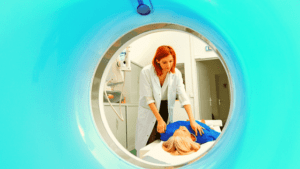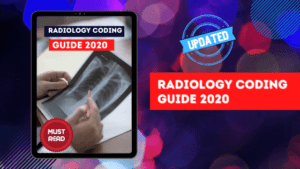If your practice in radiology services is beginning to slow down, it could be because of denials due to coding mistakes and difficulties in understanding the guidelines. Radiology coding is unlike other medical coding procedure because it involves X-rays, CT scans, MRI to be reported exactly on time without any coding errors.
The coding guidelines for all the specialties are almost updated regularly including radiology which is not an easy task for medical billing companies as well as healthcare professionals to keep in mind . Radiology coding involves accurate coding procedures along with correct and matching modifiers those convince insurance companies to prevent claim denials and generate revenue payments.
Very commonly, radiology coding denials occurs due to errors in eligibility checking, referrals and dictation. Very rarely it doesn’t cooperate to complete tests and clear documentation report. It’s is very essential for radiology practice to find whether the patient is eligible for particular medical procedure. Also to ensure if they had no benefits left or their insurance has expired.
Tips to follow accurate Radiology coding:
Tip 1:
- Do not miss out to check for an accurate number of views on the radiology report as radiology dictations fail to include accurate number of views.
- It’s the duty of coders to count proper number of views and select an accurate CPT code that suits the Radiology dictations.
- It’s very essential that number of views claims should meet the basic necessities of the reported CPT code.
- In order to describe those views during the exam, medical coders are supposed to have grip on abbreviations and medical terminologies.
- For example, during a knee exam, if radiology dictates only anteroposterior, lateral and also oblique views on knee, the medical coders must be efficient to realize whether radiologist have chosen left and right oblique views to make it four view study.
Tip 2:
- While reporting a complete abdominal ultrasound with CPT code 76700, coders must ensure if the report indicates all the areas such as liver, gallbladder, common bile duct, pancreas, spleen kidneys, upper abdominal aorta that includes inferior vena cava.
- In case if these areas are not documented, then choose a code for limited abdominal ultrasound, CPT 76705.
Tip 3:
- Always remember and do not forget to use HCPCS code G0297 which is for low dose CT scan for lung cancer screening.
- To do this, patient should meet age criteria involving the limit between 55-77 years those don’t have any signs of lung cancer, tobacco users from 30 years, current tobacco smoking habits, or if they have quit smoking recently in 15 years.
Tip 4:
- To report a mammogram for undiagnosed mass, using appropriate code is important to indicate the location on the breast by quadrant of mass.
- Many codes such as N63. 0, N63.10, N63. 20, are thoroughly denied by insurance companies.
- Recommended codes are,
- 11: unspecified lump in the right breast, upper outer quadrant.
- 14: unspecified lump in the right breast, lower inner quadrant.
- 21: unspecified lump in the left breast, upper outer quadrant.
- 24: unspecified lump in the left breast, lower inner quadrant.
Tip 5:
- X-rays for infants are mostly denied by insurance companies and they are CPT codes 73592, 73092 and for the children over the age of one.
- These radiology codes don’t specify and indicate ages. To prevent denials, consider the age of the patient.
- If the patient is one year old or older than an year, it’s crucial for healthcare professionals to order documentation and make sure those acquired images show the anatomy effectively.
Tip 6:
- Conditions those are ruled out, possible, probable or suspected are not recommended for radiology coding as they aren’t proved yet and need to be proven as existed.
- Incase if radiology exam is performed due to reasons of pain and trauma as well as swelling, coders must mention the location in the right corner.
Tip 7:
- Compulsory checking whether radiology exam has Local Coverage Determination (LCD), National Coverage Determination (NCD).
- CMS has extended to improve and develop NCD for Medicare coverage for many services and supplies for without NCD. Medicare contractors have attempted to make their own LCD.
- For radiology coding, medical coders must ensure to review local as well as national policies to ensure if ICD-10 codes are listed and selected for exam procedures while billing radiology services.
Tip 8:
- Additional modifiers would be essential for some CPT codes. Add them if necessary.
- Most of the radiology coding and procedures involve technical and professional components that can be documented with Modifier26 for professional components and Modified TC for technical components.
- Medical coders must keep an eye on National Correct Coding Initiative (NCCI) to decide if modifiers are essential for particular codes and procedures.
- Those common modifiers include:
- Modifiers LT and RT (left side and right side) to indicate laterally.
- Modifiers 59 Distinct Procedural Service
- Modifiers 76 Repeated procedure by same physician and modifiers 77 for repeated procedure by another healthcare professional.
- Modifiers 50 bilateral procedure.
Tip 9:
- Identify if there’s a contrast based on CPT radiology coding guidelines and if it’s administered by any of the following injections.
- Intra-vascular, Intra-articular, Intrathecal.
- Don’t miss to add and code MRI and CT scan exams whether with contrast or without contrast.
Hope you got the information on Radiology coding. For more suggestions, please comment below, we will definitely consider them if relevant. For more queries and updates on healthcare, please subscribe to our blog.




